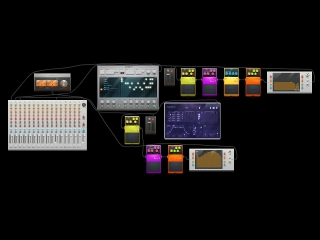

In fact, most Sigmas had laminated backs and sides, and some even had laminated tops, too. Some claim the reason they sound so good is because they were made of all solid woods, which is not the case.
#Japanese two string guitar serial numbers
There are lengthy debates about serial numbers and plenty of fables about the materials used. Vintage Sigmas from the early ‘70s are fairly hard to find, and some owners swear they compete on equal terms with Nazareth-produced originals.

In 1970, it introduced the Martin Sigma range, which rapidly established a mystique around itself worthy of its association with the Martin legend. Martin’s response to the low-cost competition was a pragmatic "if you can’t beat them…" approach. Paul Brett is still very much with us, both as an authority on vintage guitars and a designer for the Vintage brand. John Joyce died in 2004, but not before designing another Aria acoustic classic, the Sandpiper series, examples of which are also worth looking out for. They were intended to be sold only in the UK, but in fact they seem to have appeared in other countries, too. The Joyce and Brett models were extremely well-made, great-sounding, and yet quite affordable. The fact that these acoustics came from the same plant makes me wonder what else they produced, as they were known to provide instruments for other brands, including Washburn and Epiphone. Matsumoku was known to be capable of producing some fine instruments but is really best known for its solidbody guitars and basses. In fact, recent contact with a former Aria employee in Japan confirms that they were produced by Matsumoku, the factory long associated with Aria instruments (and later with Westone and others).

This doesn’t pretend to be anything like an exhaustive list-there are many but-what-abouts that could be added-but it's intended more as a starting point of what could become a fascinating journey of exploration.įeaturing entirely solid woods, the Joyce and Brett models were like no other Aria acoustics before, leading to speculation that they had been made by one of the premier Japanese acoustic producers. What we are looking for here, however, are the standout guitars from the less obvious sources that are worth tracking down-and that will repay the dedicated hunter with an individualistic instrument of surprising quality, and an instrument by now nicely played-in, aged, and, with a bit of luck, at a good price. Either brand really deserves its own article, as does Alvarez Yairi. More or less any Takamine is going to be good, and any Yamaha is going to be at least pretty playable and, at its best, world-class. The prowess of some brands in this area is a given.

The good news is that a small number of dedicated fans have worked hard to retrieve useful information, so Google is your friend. Compounding that, 40 years later, memories can be unreliable, and what records there were may have been lost. Where do you begin looking, when most of the published information is firmly focused on the major American acoustic makers? Well, there is information online, sometimes scrappy and sometimes contradictory, but that is something you have to get used to when researching Japanese guitars.Įven some of the distributors of the big brands were never quite sure who was making which of their models, nor quite sure what they were going to get in the next shipment.
#Japanese two string guitar series
"Who made what and for whom?" is an endless pursuit-and it does matter, because a brand could suddenly produce an unexpectedly superior instrument, having bought a particular model or series from one of the better suppliers. The Japanese acoustic guitar scene of the ‘70s isn’t an easy one to follow. This sent manufacturers and brand owners (not always the same things) first to South Korea and then to China, where the learning curve had to begin all over again. In fact, Japanese guitar making had reached a peak during that decade, having perfected the mass production of quality instruments at a time when specialist tonewoods were still freely available-and just before production costs rose. Many electric guitarists have recognized the value of ‘70s Japanese-made electric guitars from the likes of Tokai, Ibanez, Yamaha, and others, but acoustic players have been slower to appreciate the riches available from the era.


 0 kommentar(er)
0 kommentar(er)
